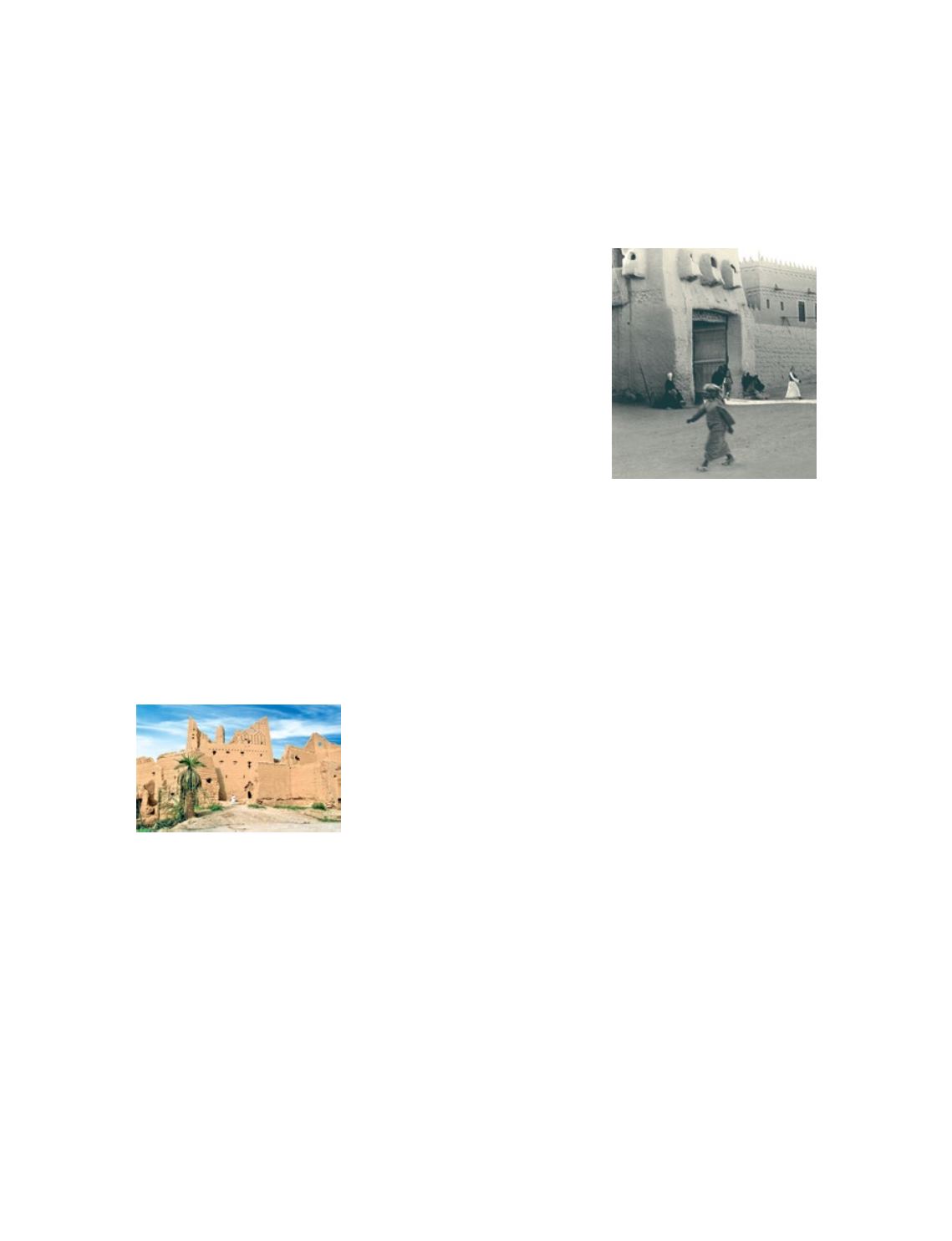

10
R
iyadhhasahistorywhichstretches farback intoantiquity: ancient
monuments which date tomore than 15,000 years ago have been
discovered in the suburb of al-Thumamah. Life history, tales of Arabian
kingdoms with civilizations successively established homes on the fertile
soil of al-Yamamah; poems andpoetic descriptionof locations and battles
that embodied the pre-Islamic life of the Arabs; gardens, settlements,
trade, episodes, literature that had flourished at today’s site of Riyadh.
During successive Islamic dynasties, what we now know as Riyadh and
the surrounding areas were known as al-Yamamah Region. Al-Yamamah
became famous for its agricultural abundance and provided food for many
residents of the Arabian Peninsula. In particular, Al-Yamamah was the
source of superior quality date palms from which the best species of palm
trees were propagated throughout the world. At the same time the desert
surroundingthisoasismaintained it inrelative isolationandplayedamajor role inpreserving itsuniquecharacter.
Early towns and villages in the area included Mi’akal, al-Beneyah and Manfouhah, and over time these
merged to become the nucleus of the new town of Riyadh, which became well known during the First Saudi
State in the 17
th
century.
Riyadh’sboundariesandspecialarchitecturalcharacterbecamemoredefinedduringtheSecondSaudiState,
for which Riyadh served as capital. During the reigns of Imams Turki Ibn Abdulla and his son Faysal Ibn Turki,
the chief landmarks of the city were renovated – the city wall, the Government Palace (Qasr al-Hukm), the
GrandMosque and themain residential districts. By nowRiyadhwas established as one of themain capitals of
theArabianPeninsula, and a principal centre of Arabian trade, agricultural
and culture.
The golden age of the city of Riyadh began on the 5
th
day of Shawal
1319H(15
th
January1902)withtherestorationofthecitybyKingAbdulaziz
and establishment of the Modern Saudi State. The city’s landmarks
were refurbished, and Riyadh became the seat of the Government of
the Kingdom of Saudi Arabia and capital of the country. Since then, the
size of the city has doubled more than a hundred times to accommodate
a burgeoning population. Today, Riyadh is one of the world’s major
decision-making capitals, and a focal point for economy and culture, but it
stillmaintains its links to a time-honouredpast.
• Source: Saudi Aramco
















